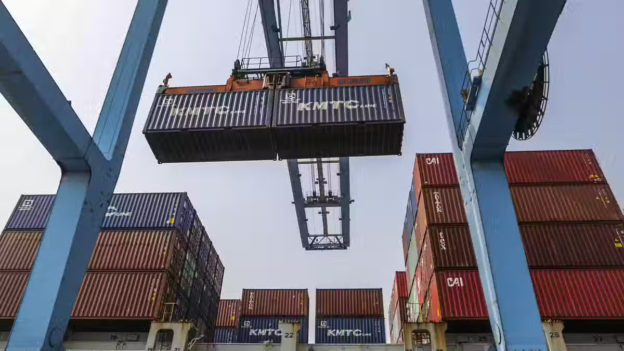While Indian auto components industry exports 30% of its production, its share in the global auto components trade is a mere 1.3%; PLI can help improve that.
Credit must be given to the Prime Minister for bringing manufacturing to the centre-stage of development as we commence our journey towards the centenary year of our independence. The Production Linked Incentive (PLI) scheme, announced for 13 sectors, will be the hallmark of our transition to a confident, atmanirbhar country, through the development of a wholesome manufacturing ecosystem that will have the right enablers and factors to uplift the entire manufacturing industry.
Apart from making India a world-class manufacturing hub, the PLI scheme (first announced in the Union Budget of 2021-22) is also aimed at reducing our import bill and improving the cost competitiveness of locally-produced goods by incentivising incremental production.
The PLI scheme for the automobile and auto component industry, with an outlay of Rs 26,000 crore ($3.5 billion) for five years commencing FY23, will incentivise investments in 105 new-age, advanced automotive technologies (ATT) such as electronic power steering system, sensors, supercapacitors, ECUs, parts of EVs, hydrogen fuel cells and parts, adaptive front lighting, automatic braking, tyre pressure monitoring system, and collision warning systems, among others. This PLI scheme has already attracted proposed investment of Rs 74,850 crore as against the target of Rs 42,500 crore. A total of 20 vehicle manufacturers and another 75 auto component manufacturing companies, Indian and foreign, have been approved for incentives under it. Prior to this, the Ministry of Heavy Industries had announced the PLI for ACC battery with an allocation of Rs 18,100 crore ($2.5 billion) as also modification and extension of the FAME-2 with an allocation of Rs 10,000 crore ($1.35 billion). This is indeed very opportune; the auto industry couldn’t have asked for more.
The automotive industry, with over $100 billion in turnover and accounting for almost 7% of India’s GDP, is a key driver of the economy. The auto components industry, with $46 billion in turnover, is a testimony to the Indian spirit of entrepreneurship. It exports over 30% of its production; majority of which is destined to leading global OEMs and tier-1s in the US and Europe. Despite a significant proportion of our production being exported, the share of Indian industry in global auto component trade is a mere 1.3%, and that apart the import content in the entire automotive value chain at $25 billion annually is a cause for worry.
The automotive industry is at an inflection point; it is disrupting with concern for climate change, environment and energy security being paramount. With India’s commitment for carbon neutrality by 2070, it is imperative that the automotive industry plays a dominant role by adopting green, clean and eco-friendly technologies for products and manufacturing. There is also a renewed thrust by our government for adopting electric mobility, alternate fuels and reduction in consumption of fossil fuels.
The long-term vision of the PLI scheme to boost domestic manufacturing and enhance our export competitiveness will benefit the auto industry value chain in multiple ways. While propelling value addition and keeping the industry relevant for future on one hand, it will lead to employment-generation opportunities on the other. Apart from bringing in fresh investments in newer technology domains, the scheme is estimated to create additional employment opportunities of over 750,000 jobs.
The auto component industry is dominated by MSME players. Whilst the PLI’s orientation is towards large investments, any benefits received by tier-1 players will trickle down to tier-2 and tier-3 players, as the beneficiaries have to commit to significant localisation. Further, as the top-tiers invest and upgrade their technology, it will also pull the upstream industry to innovate and upgrade.
Going forward, as the industry embarks on a path of growth and revival, with support of the PLI, attention needs to be on being future-ready and globally competitive through technological competence. Thrust on incentivising new-age technologies will facilitate the creation of a state-of-the-art automotive value chain and give a much-needed impetus to ‘Make in India’. With global economies de-risking their supply chains, the PLI will aid India in developing into an attractive alternative source of high-end auto components for the world. The ball is now clearly in the industry’s court.
https://www.financialexpress.com/express-mobility/pli-scheme-making-indian-auto-value-chain-globally-competitive/2479878/





